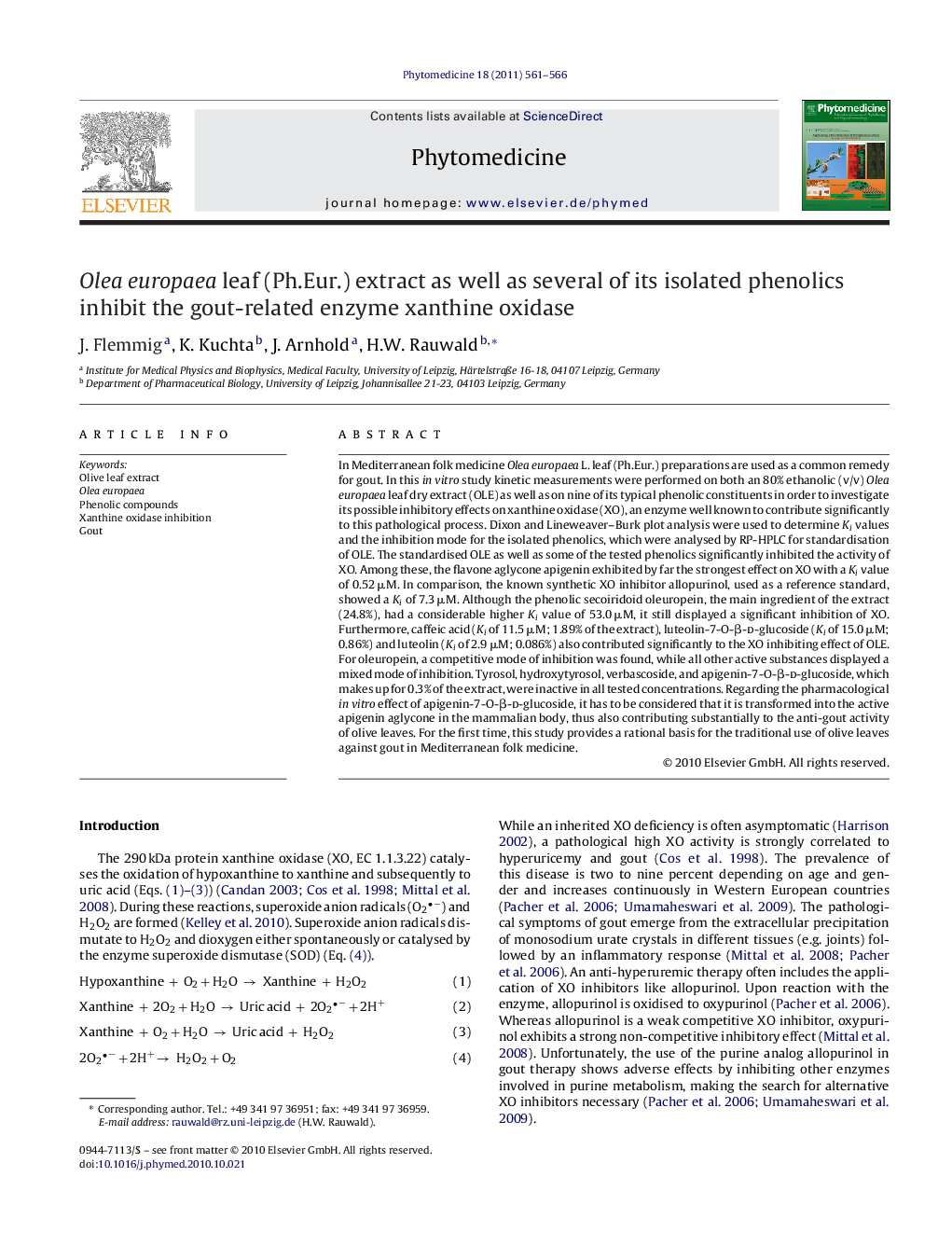| کد مقاله | کد نشریه | سال انتشار | مقاله انگلیسی | نسخه تمام متن |
|---|---|---|---|---|
| 5816962 | 1116181 | 2011 | 6 صفحه PDF | دانلود رایگان |
عنوان انگلیسی مقاله ISI
Olea europaea leaf (Ph.Eur.) extract as well as several of its isolated phenolics inhibit the gout-related enzyme xanthine oxidase
دانلود مقاله + سفارش ترجمه
دانلود مقاله ISI انگلیسی
رایگان برای ایرانیان
کلمات کلیدی
موضوعات مرتبط
علوم زیستی و بیوفناوری
بیوشیمی، ژنتیک و زیست شناسی مولکولی
بیوشیمی بالینی
پیش نمایش صفحه اول مقاله

چکیده انگلیسی
In Mediterranean folk medicine Olea europaea L. leaf (Ph.Eur.) preparations are used as a common remedy for gout. In this in vitro study kinetic measurements were performed on both an 80% ethanolic (v/v) Olea europaea leaf dry extract (OLE) as well as on nine of its typical phenolic constituents in order to investigate its possible inhibitory effects on xanthine oxidase (XO), an enzyme well known to contribute significantly to this pathological process. Dixon and Lineweaver-Burk plot analysis were used to determine Ki values and the inhibition mode for the isolated phenolics, which were analysed by RP-HPLC for standardisation of OLE. The standardised OLE as well as some of the tested phenolics significantly inhibited the activity of XO. Among these, the flavone aglycone apigenin exhibited by far the strongest effect on XO with a Ki value of 0.52 μM. In comparison, the known synthetic XO inhibitor allopurinol, used as a reference standard, showed a Ki of 7.3 μM. Although the phenolic secoiridoid oleuropein, the main ingredient of the extract (24.8%), had a considerable higher Ki value of 53.0 μM, it still displayed a significant inhibition of XO. Furthermore, caffeic acid (Ki of 11.5 μM; 1.89% of the extract), luteolin-7-O-β-d-glucoside (Ki of 15.0 μM; 0.86%) and luteolin (Ki of 2.9 μM; 0.086%) also contributed significantly to the XO inhibiting effect of OLE. For oleuropein, a competitive mode of inhibition was found, while all other active substances displayed a mixed mode of inhibition. Tyrosol, hydroxytyrosol, verbascoside, and apigenin-7-O-β-d-glucoside, which makes up for 0.3% of the extract, were inactive in all tested concentrations. Regarding the pharmacological in vitro effect of apigenin-7-O-β-d-glucoside, it has to be considered that it is transformed into the active apigenin aglycone in the mammalian body, thus also contributing substantially to the anti-gout activity of olive leaves. For the first time, this study provides a rational basis for the traditional use of olive leaves against gout in Mediterranean folk medicine.
ناشر
Database: Elsevier - ScienceDirect (ساینس دایرکت)
Journal: Phytomedicine - Volume 18, Issue 7, 15 May 2011, Pages 561-566
Journal: Phytomedicine - Volume 18, Issue 7, 15 May 2011, Pages 561-566
نویسندگان
J. Flemmig, K. Kuchta, J. Arnhold, H.W. Rauwald,